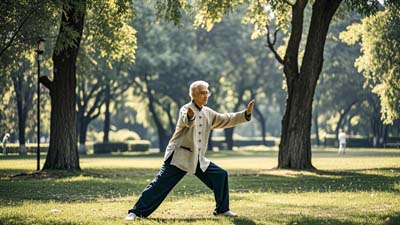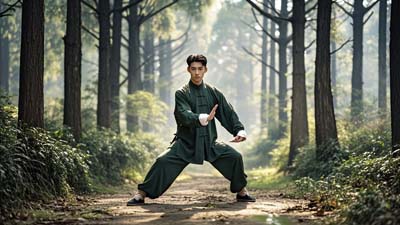You know Chinese Kung Fu because of movies, right?
Chinese Kung Fu is so much more. It embodies China’s national wisdom and traditional culture in one very pure active art form.
The main concepts of Kung Fu are moderation and harmony. Its artistic nature and require for discipline has influenced the entire world. Shaolin, Tai Chi and Wing Chun have spread across every culture.
People across China continue to widely practice and preserve traditional Chinese Kung Fu, showcasing its enduring cultural significance.

Shaolin Kung Fu stands as one of the oldest, most widely practiced, and famous martial arts styles worldwide.
It combines both the art of Zen and martial arts and originated in the Shaolin Temple in Henan Province, China. It was first developed 1500 years ago.
A famous Chinese folk saying claims, “All Martial Arts Originated from the Shaolin,” and exclaims, “Shaolin Kung Fu is the Best in the World.”
So if you are a martial arts fan, you should learn the influence of Shaolin.
Shaolin also represents an overall umbrella of martial arts practices in Kung Fu. People across both southern and northern China utilize various styles associated with Shaolin Kung Fu.
Shaolin Kung Fu places its emphasis on practical combat and real-life situations.
Therefore, the structure of its routine is short, precise, tight, compact, fast-paced, flexible and offensive and defensive, and uniform in consciousness and movement.
Zhè běn shū jièshào le shàolín gōngfū de zhǒnglèi.
这 本 书 介 绍 了 少 林 功 夫 的 种 类。
This book introduces the types of Shaolin Kung Fu.

This is an internal Chinese martial arts, focusing on the mind and its connection to the body.
It teaches both defensive training and body awareness, which has proven to lead to many health benefits term Tai Chi refers to the philosophy of yin and yang and how these forces relate to action.
Although initially considered martial arts, it is usually practiced for various other personal reasons: for example, it’s used by men and women to extend longevity, or even for competitive wrestling.
Therefore, there are a variety of traditional and modern forms of training that correspond to different results. In general, most people, Chinese or foreign, are familiar with Tai Chi and its relatively slow movements.
mood movement.
Lǎorén men fēicháng xǐhuān tàijí quán.
老 人 们 非 常 喜 欢 太极 拳。
Old people like Tai Chi very much.

Wing Chun is a traditional Chinese martial art.
It is a technique that is used to stop invading attacks.
It is an active, streamlined, legitimate defense system and a boxing technique that uses force.
Compared with other traditional Chinese martial arts, Wing Chun is much more focused on subduing opponents as soon as possible to minimize damage to the fighters.
close-range combat.
Lǐxiǎolóng xìtǒng de xuéxí guò yǒng chūn quán.
李小 龙 系 统 地 学习 过 咏 春 拳。
Bruce Lee systematically studied Wing Chun.

Drunken Master Boxing is one of the main boxing techniques in Chinese martial arts.
It is a kind of boxing technique that imitates the action of drunkards.
Pretty creative, right?
Fighters mimic the actions of a drunk person to astonish their opponents with unpredictable movements.
He seemed to be drunk in his body, but he was not drunk in his mind.
Zuì quán shì yìzhǒng chuántǒng de quánshù.
醉 拳 是 一 种 传 统 的 拳 术。
Drunken master is a traditional boxing technique.

The contemporary martial arts activity Nanquan is a modern style created in 1960.
It originated from the martial arts of the south provinces along the Yangtze River in China, and is mainly popular in Guangdong, Guangxi, Fujian and Zhejiang.
vibrant athletic movement; very stable; low stances; lots of manual skills.
Nán quán shì nánfāng gèzhǒng quánshù de tǒngchēng.
南 拳 是 南 方 各 种 拳 术 的 统 称。
Nan Quan is the common name for boxing in the south.

1. Which of the following Kung fu style is not originated from China?
A. 少林功夫 (Shàolín gōngfu)
B. 跆拳道 (Táiquándào)
C. 太极拳 (Tàijí quán)
Ronina Li lives in the Beijing and has been a Mandarin teacher for 6 years. She likes reading and delicious food. She hope she can help more people to learn Chinese language and know Chinese culture.
Chinese Culture
HSK Test
General Chinese (Beginner Level)
General Chinese (Intermediate Level)



